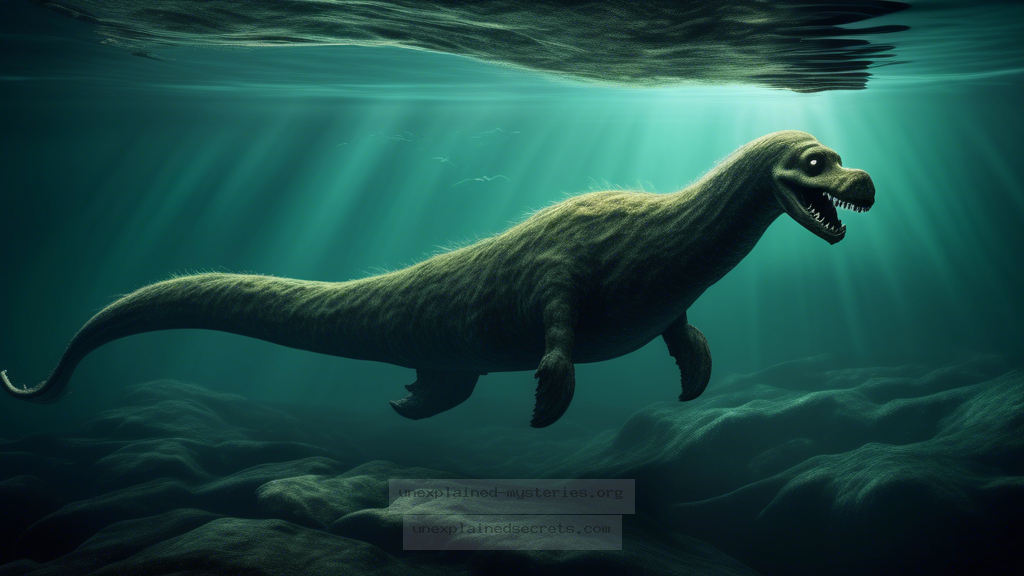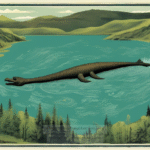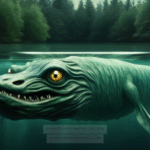What Lies Beneath? The Real Science Behind Sonar Detections of the Loch Ness Monster
What Lies Beneath? The Real Science Behind Sonar Detections of the Loch Ness Monster
The Loch Ness Monster has long been a subject of fascination, intrigue, and skepticism. For decades, this enigmatic creature has captured the imaginations of researchers and enthusiasts alike. Among the most compelling methods used to detect potential evidence of Nessie are sonar technologies. But what do these sonar detections actually reveal about the depths of Loch Ness? Understanding the science behind sonar, its applications in the search for the Loch Ness Monster, and the implications of its findings can illuminate this enduring mystery.
Historical Context: The Loch Ness Phenomenon
The legend of the Loch Ness Monster dates back to the early centuries, with the first modern sighting reported in 1933. Since then, the tales of a large, mysterious creature residing in the depths of the loch have proliferated. The famous photograph known as the “Surgeon’s Photo,” taken in 1934, fueled public interest and speculation. As the legend grew, so did the scientific endeavors to uncover the truth behind these sightings.
Sonar technology began to be employed more rigorously in the 1950s and 1960s, as scientists and enthusiasts sought to explore the depths of Loch Ness. This technology, capable of mapping underwater topography and detecting objects beneath the surface, became a key tool in the investigation of the Loch Ness Monster phenomenon.
Understanding Sonar Technology
Sonar, or Sound Navigation and Ranging, is a technique that uses sound waves to detect and locate objects underwater. There are two primary types of sonar: active and passive. Active sonar sends out sound waves and listens for their echoes, while passive sonar simply listens for sounds made by objects in the water.
In the context of Loch Ness, researchers have primarily used active sonar systems. These systems can create detailed images of the loch’s underwater landscape and identify anomalies that could suggest the presence of large creatures. This technology is crucial for mapping the depths of Loch Ness, which reaches a maximum depth of approximately 230 meters (755 feet).
Notable Sonar Expeditions and Findings
Several significant sonar investigations have taken place over the years, each contributing to our understanding of what might be lurking in the depths of Loch Ness. One notable expedition occurred in 1987, known as Operation Deepscan. This extensive survey utilized a fleet of boats equipped with sonar devices to scan the loch’s depths over a three-day period.
The results of Operation Deepscan were intriguing. Researchers detected a large, moving object approximately 20 meters (66 feet) below the surface, initially leading to speculation about the existence of a large creature. However, further analysis suggested that the object could have been a school of fish or a natural geological formation. This illustrates the challenges of interpreting sonar data in the context of Loch Ness.
The Science Behind Sonar Detections
Sonar detections, while promising, require careful analysis. The sonar technology used in Loch Ness investigations operates on specific frequencies that can penetrate water but may be impacted by various environmental factors such as temperature, salinity, and even the presence of sediments or debris. These factors can complicate the interpretation of sonar data, leading to both false positives and missed detections.
Additionally, the loch’s unique ecological system plays a role. The presence of various marine life, including fish, eels, and even large debris, can create echoes that may resemble those of a larger creature. Thus, while sonar can detect anomalies, it does not automatically equate to evidence of the Loch Ness Monster. Researchers must apply critical analysis to distinguish between potential Nessie sightings and ordinary underwater occurrences.
Core Concepts and Theories Surrounding the Loch Ness Monster
Theories regarding the existence of the Loch Ness Monster can be categorized into several core concepts:
- Plesiosaur Theory: Some believe that Nessie could be a surviving species of marine reptile from the age of dinosaurs, specifically a plesiosaur. This theory is popular yet heavily debated due to the improbability of such a creature surviving in isolation for millions of years.
- Large Eels: Another theory posits that the monster may be a giant eel, as Loch Ness is known to contain a healthy population of eels. This theory finds some support in the fact that eels can grow large and exhibit unusual behaviors.
- Misidentification: Many sightings of Nessie may be attributed to misidentified objects, such as logs or waves. This perspective emphasizes the human tendency to perceive patterns in randomness.
- Psychological and Cultural Phenomenon: Some argue that the Loch Ness Monster is a manifestation of cultural myths and psychological projections, where the allure of the unknown drives belief and sightings.
Practical Implications of Sonar Research
The use of sonar technology in Loch Ness investigations not only aids in the search for the monster but also contributes to broader ecological studies in the loch. By mapping underwater structures and habitats, researchers can gain insights into the ecosystem, including fish populations and geological formations. This information is invaluable for conservation efforts and understanding the loch’s health.
Key Insight: Sonar technology serves dual purposes: it aids in the ongoing search for the Loch Ness Monster while also contributing to ecological research, underscoring the importance of technology in modern cryptozoology.
Alternative Perspectives: Skepticism and Belief
In the world of cryptozoology, skepticism plays as significant a role as belief. While some enthusiasts passionately advocate for the existence of the Loch Ness Monster, others approach the subject with a critical eye. Skeptics argue that anecdotal evidence and misinterpretation of sonar data are insufficient for substantiating claims of a monster in the loch.
Moreover, scientific investigations often highlight the need for rigorous methodologies in exploring such phenomena. The scientific community generally requires empirical evidence, which has yet to be conclusively provided by sonar findings. This divide between believers and skeptics creates an ongoing discourse that enriches the mystery of Loch Ness.
Common Misconceptions and Clarifications
There are several misconceptions surrounding sonar and Loch Ness investigations that warrant clarification:
- Sonar Can “See” Creatures: Many people assume that sonar provides visual images of underwater creatures. In reality, sonar generates sound waves that offer a representation of size and location, rather than clear images.
- All Anomalies Are Monsters: Not every sonar anomaly indicates the presence of a large creature; many factors can create echoes, including natural formations and schools of fish.
- Sonar Is Infallible: While sonar is a powerful tool, it is not without limitations. Environmental factors can significantly impact readings, leading to potential inaccuracies.
Warning: Beware of sensationalized claims surrounding sonar detections. Always seek evidence-based research and analysis when considering the Loch Ness Monster phenomenon.
Best Practices for Investigating Cryptids Like Nessie
For those interested in investigating cryptids such as the Loch Ness Monster, adherence to best practices can enhance the integrity of research efforts:
- Employ Diverse Methodologies: Utilize a combination of sonar, underwater cameras, and environmental studies to gather comprehensive data.
- Engage with Experts: Collaborate with marine biologists, ecologists, and sonar specialists to ensure a well-rounded approach to research.
- Document Findings: Maintain meticulous records of all sonar data and observations to facilitate analysis and peer review.
- Remain Objective: Approach findings with skepticism and rigor, avoiding confirmation bias that can cloud judgment.
Future Developments and Ongoing Research
The search for the Loch Ness Monster continues to evolve with advancements in technology and methodologies. With the rise of drone technology and improved sonar systems, future expeditions are poised to provide even deeper insights into Loch Ness. Researchers are also exploring the integration of machine learning algorithms to analyze sonar data more effectively, potentially leading to breakthroughs in understanding the loch’s mysteries.
Furthermore, collaborative efforts among international researchers can enhance the scope and efficacy of future investigations. By pooling resources and expertise, the quest for Nessie may yield new discoveries, whether they uncover the legendary creature or reveal the rich biodiversity of Loch Ness.
Conclusion: The Mystery Endures
The sonar detections in Loch Ness present a fascinating intersection of technology, folklore, and science. While these detections have yet to provide conclusive evidence of the Loch Ness Monster, they have certainly contributed to our understanding of the loch’s ecology and the broader field of cryptozoology. As researchers continue to probe the depths of Loch Ness, the question of what truly lies beneath remains a captivating enigma, inviting both believers and skeptics to delve deeper into this enduring mystery.
Whether the Loch Ness Monster is a reality or merely a myth, one thing is clear: the allure of the unknown will continue to inspire exploration and inquiry for generations to come.
Other Articles
Recent Posts
- What Happened to Flight MH370? The Conspiracy Theories That Still Haunt Us
- What Secrets Lurk Within the Walls of the Infamous Trans-Allegheny Lunatic Asylum?
- What Evidence Supports the Existence of Bigfoot in the Pacific Northwest?
- What Happened to the Indus Valley Civilization? Unraveling the Mysteries of Ancient Urban Life
- Can Telepathy Be Scientifically Proven Through Laboratory Evidence?







